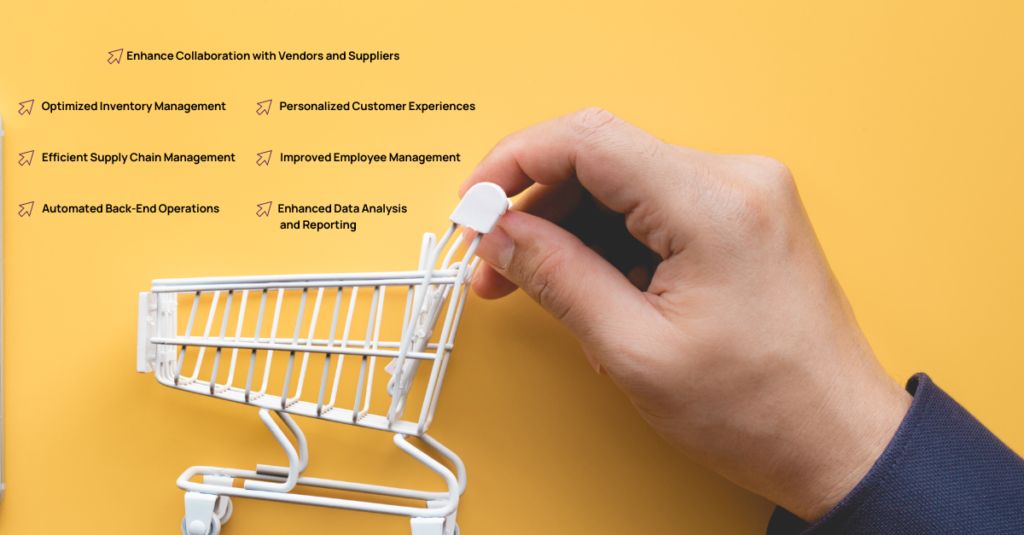Enabling Digital Transformation in Retail with Low Code
The retail industry has always recognized technology as essential for business growth. Still, digitization is more important now, from what customers buy to how, where, and why they buy, their behaviour has significantly changed since 2020 and is evolving quickly.
And that is where low code no-code platforms have emerged as a keep enabler—allowing retailers to develop, deploy, and manage custom retail execution applications with speed and efficiency. It has helped them create paths to sustained value creation over the long term.
Interested to know how?
This blog explains everything—from the core tenets of low code development to how it makes retailers resilient to the ever-changing customers’ needs. We will explore how low code solutions enable digital transformation quickly—from simplifying back-end operations and inventory management to creating immersive, personalized customer experiences.
But first,
What is Digital Transformation?
Digital transformation goes beyond merely integrating digital technologies into a company’s everyday processes. It involves preparing the business for a digital future by considering the latest technologies, best practices, capabilities, and talent.
Digital transformation is a fundamental business strategy and structure shift to align with a digital perspective. For many organizations, a digital transformation typically requires:
- Developing new applications, establishing connections, and employing advanced analytics;
- Upgrading to cloud-based systems;
- Developing mobile applications that are customer-oriented;
- Automating workflows for increased efficiency.
Digital Transformation in Retail: Key Challenges
Effective Supply Chain Management
Approximately 80% of the U.S. population now shop online. Retailers are harnessing new digital platforms to extend their physical storefronts into the virtual world and cater to this mounting e-commerce demand.
Competing in this arena necessitates swift shipping capabilities, demanding retailers monitor their inventory levels consistently. However, the lingering effects of the pandemic-induced supply chain disruptions continue to pose challenges.
Enhancing Customer Engagement
E-commerce presents a paradox: customers demand instantaneous access to brands, often provided by AI-powered bots, but also crave a personalized shopping experience.
A report suggests that personalization sways the purchasing decisions of 84% of online shoppers, with 88% expressing a preference for websites providing immersive, tailored customer experiences.
Securing customer loyalty becomes pivotal when competitors are merely a click away. Consumers expect immediate responses to their queries, and manual replies often do not meet these expectations.
Ensuring Omnichannel Engagement Consistency
Consistent branding is vital to cultivating customer loyalty. Modern shoppers are not confined to a single platform when researching a company.
They might first explore your brand on Instagram, evaluate your visual content, then peruse your Facebook status updates or LinkedIn posts. Social media typically dominate this initial research phase.
If your brand piques their interest, they will probe deeper via numerous channels: browsing your physical storefront, exploring your online store, or shopping via your mobile app. The question then arises: will they encounter inconsistent branding or a smooth, seamless transition?
Overcoming Retail Challenges with Low Code, No Code Platforms
By leveraging low-code, no-code platforms, retailers can drive digital transformation efficiently and cost-effectively, enhancing their operational efficiency, customer experience, and overall business performance.

- Efficient Supply Chain Management: Retailers can build custom applications using low-code, no-code platforms to monitor and manage their supply chain. For instance, a grocery retailer could create an application that tracks the journey of a product from supplier to store in real time, ensuring inventory levels are maintained and avoiding stockouts or overstock situations.
- Optimized Inventory Management: Retailers can leverage these platforms to build tailored inventory management systems to manage product turnover, optimize stock levels, and even automate reordering processes. For example, a fashion retailer could use such a platform to develop a system that tracks sales trends, predicts demand, and automatically places orders to restock popular items, reducing manual effort and enhancing operational efficiency.
- Personalized Customer Experiences: By developing customer-facing apps with low-code, no-code platforms, retailers can offer personalized shopping experiences. You could develop an app that recommends products based on a customer’s browsing and purchase history, creating a more personalized and engaging shopping experience.
- Improved Employee Management: Retailers can design apps to manage their employees better. A supermarket, for instance, might build an app for employee scheduling and task assignment. It could streamline workforce management and improve store operations while reducing the time managers spend on administrative tasks. Similarly, by automating routine operations, the retailer can reallocate its workforce to more strategic roles where human intervention is essential. At the same time, as low code becomes a daily necessity, workforces must reskill themselves to prepare for the new job opportunities that automation brings.
- Automated Back-End Operations: Use low-code, no-code platforms to automate various back-end operations, like the process of recording sales transactions, updating inventory, and generating invoices. It minimizes manual errors, saves time, and allows you to focus more on strategic tasks.
- Enhanced Data Analysis and Reporting: Build data analysis and reporting tools customized to your specific needs. For example, if you are a home goods store, you could develop an application that integrates sales, customer, and inventory data to generate detailed reports, providing valuable insights for decision-making.
- Enhance Collaboration with Vendors and Suppliers: Connect various vendor, partner, and supplier portals through APIs to create a web of real-time information exchange. Grant access to essential data from ERP systems to self-service portals for partners and vendors to significantly minimize support requests and reduce time spent on routine updates and casual communication. With real-time updates on milestones and delays from vendors, make planning down the supply chain more efficient and accurate.
Drive Digital Transformation with Zvolv
In conclusion, the retail industry stands on the cusp of a significant transformation driven by the rise of low code and no-code platforms. Their digital future is in automation. With platforms like Zvolv, retail brands can build intelligent automation processes, streamlining everything from data collection to order processing, store planning, and customer self-service. It is a more efficient and responsive approach to business that increases the value delivered while remaining cost-effective.
The future belongs to those retail brands that recognize the potential of intelligent process automation, and choose to take the leap, driving their digital transformation journey in ways previously unimagined. The dawn of this retail revolution is here, and the time to act is now.
Want to know more?
Download the 7-day action plan to start evolving business processes on Zvolv.



